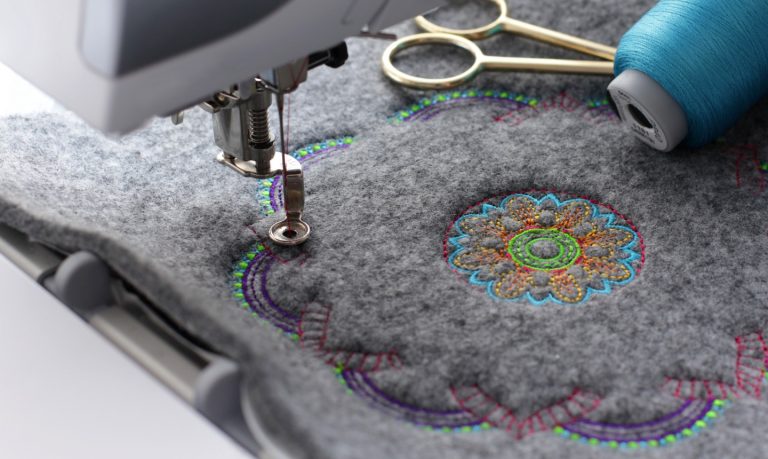Simplifying the Art of Embroidery Digitizing: Step-by-Step Guide
Needlework digitizing is a meticulous craft that requires accuracy and imagination. As innovation continues to advancement, the digitization process has come to be more accessible, allowing fanatics to bring their detailed styles to life easily. In this guide, we will unravel the complexities of embroidery digitizing, damaging down each action carefully to enhance the procedure and equip both beginners and seasoned embroiderers alike. Stay tuned to discover how you can simplify this intricate art kind and transform your imaginative visions right into perfectly embroidered masterpieces.
Understanding Needlework Digitizing Software Application
Needlework digitizing software application functions as a crucial tool for transforming detailed layouts into digital styles suitable with embroidery makers, helping with specific sewing and personalization. This customized software allows individuals to import numerous image file styles, such as JPG or PNG, and convert them into needlework machine-readable layouts like DST, EXP, or PES - Digitizing for Embroidery. By utilizing features like stitch editing, underlay alternatives, and thread shade option, digitizing software program allows customers to manage every element of the layout procedure
Moreover, advanced embroidery digitizing software application uses devices for developing intricate layouts, adjusting stitch density, and incorporating elaborate details. Users can likewise preview the style prior to sewing it out, making sure precision and decreasing mistakes. In addition, many software application programs offer automated attributes that aid streamline the digitizing process, saving effort and time.
Understanding the capacities of embroidery digitizing software program is necessary for achieving top notch lead to needlework projects. By mastering this device, needlework enthusiasts and experts can release their imagination and bring intricate designs to life with precision and effectiveness.

Selecting the Right Design Data
After acquainting on your own with the capabilities of embroidery digitizing software application, the next important step in the process is selecting the right layout documents for your project. Digitizing for Embroidery. When selecting a style declare embroidery digitizing, it's vital to consider the intricacy of the style, the size of the end product, and the sort of material you will be working with
For intricate layouts with great information, a high-resolution picture or vector file is recommended to guarantee that the embroidery machine can properly duplicate the style. Furthermore, the size of the end product plays a substantial function in choosing the appropriate layout documents. Larger designs might require higher resolution files to preserve clearness and sharpness.
In addition, the type of material you will be stitching on influences the choice of style data. Different materials might need changes in the layout documents to guarantee that the stitches are effectively lined up and the style looks like intended. By meticulously picking the best design data based upon these elements, you can establish yourself up for an effective embroidery digitizing process.
Digitizing Tools and Strategies
Utilizing specialized software and precision strategies, digitizing devices are important in changing intricate styles right into embroidery-ready files. Embroidery digitizing software application, such as Wilcom, Hatch, or Embrilliance, offers the needed platform to transform artwork into stitch information. These programs offer attributes like stitch modifying, underlay alternatives, and lettering tools to ensure the layout equates flawlessly onto material.
Among the vital strategies in digitizing is producing a clear course for the embroidery machine to follow. This entails digitizing each component of the design with accuracy, determining stitch types, thickness, and instructions. By using tools like site web digitizing tablet computers or software-specific plugins, embroiderers can attain a high degree of precision in their digitized layouts.
Moreover, grasping the art of rug stitching is vital for producing high quality embroidery. visit the site Underlay stitching stabilizes the fabric and creates a foundation for the style, ensuring that the final product is both aesthetically appealing and long-lasting. By understanding these digitizing tools and techniques, embroiderers can elevate their craft and bring elaborate styles to life with accuracy and performance.
Personalizing Stitch Kinds and Instructions
The choice of stitch types can dramatically affect the total look and texture of the stitched layout. By purposefully combining these stitch kinds, embroiderers can accomplish depth and dimension in their styles.
Additionally, the direction of stitches plays a crucial role in improving the aesthetic charm of the final embroidery. Varying stitch instructions can add appearance, emphasize certain components, and create aesthetic interest. For instance, transforming the angle of stitches can replicate activity or natural patterns like fur or feathers. By trying out different stitch angles and patterns, embroiderers can bring their layouts to life with exceptional information and intricacy. Mastering the art of tailoring stitch types and instructions equips embroiderers to unleash their creative thinking and boost the top quality of their job.
Testing and Refining Your Digitized Style
To ensure the precision and top quality of your digitized style, extensive screening and refinement are vital actions click resources in the embroidery digitizing procedure. Once you have completed the digitization of your style, it is critical to check it prior to waging the real embroidery. Evaluating enables you to identify any prospective concerns such as thread breaks, stitch thickness issues, or layout distortions that might impact the result.

After testing, it is necessary to improve your digitized design based upon the feedback from the test sew-out. This might include tweaking sew setups, adjusting densities, or making changes to the overall layout to accomplish the desired end result. By iterating with testing and refinement, you can tweak your digitized style to perfection before progressing with the real needlework procedure.
Verdict
To conclude, mastering the art of embroidery digitizing needs a detailed understanding of the software program, picking the appropriate layout file, making use of digitizing tools and techniques, customizing stitch kinds and directions, and screening and improving the digitized layout. By following these actions, embroiderers can simplify the digitizing procedure and produce top quality embroidered styles with accuracy and effectiveness.